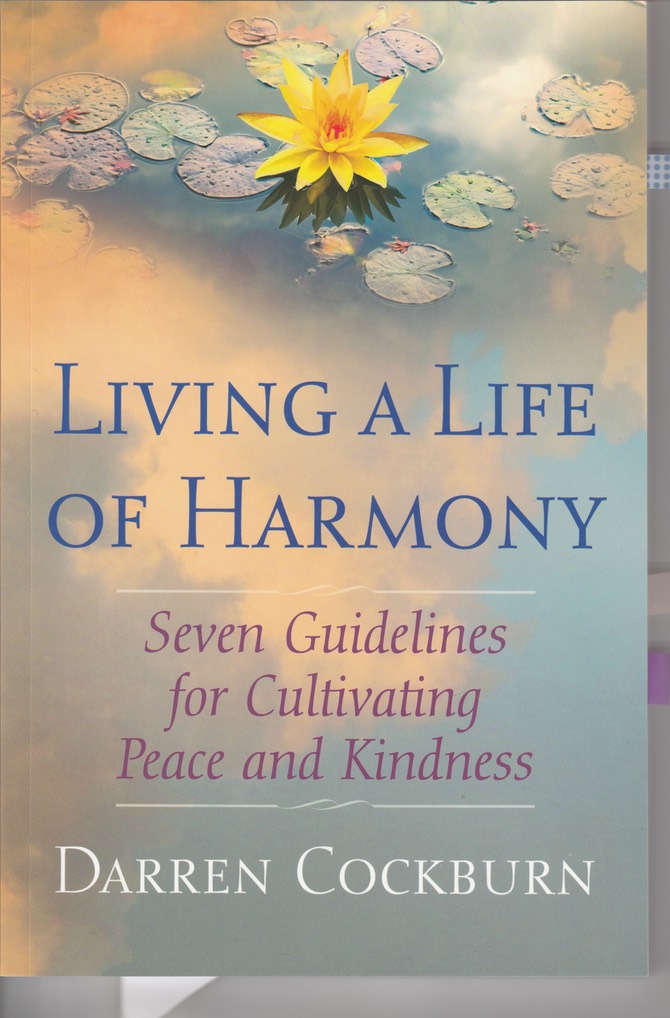A book on Spirituality & Mindfulness by Darren Cockburn published by Findhorn Press 2019.
Review by Lalia Wilson
This book is about the right way to live, a way to avoid high drama and have a life with authenticity and love. It is not a book about tarot, but it is a book that would be of interest to tarot enthusiasts. As a tarot reader you likely started your interest in tarot by trying to figure out yourself, then friends, and then clients. This book will show you ways that you can live a less stressful life. It is also a book you can share with anyone you think is ready to step off the drama wagon. Most importantly, practicing these suggestions will make you a far better tarot counselor.
In 2004, Robert Fulghum published his book All I Really Need to Know I Learned in Kindergarten. It might be considered a K-6 version of how to get along successfully in life. Darren Cockburn’s book would constitute an undergraduate degree in living a life of integrity and satisfaction. Here you find out how to advance beyond the kindergarten rules to full-fledged adulthood. In addition to several general chapters, the book contains a chapter and much information about each of the seven guidelines (indicated below).
For example, having a healthy body is essential to long term plans for your life. Thus you need to make decisions that honor your body. These are decisions about how much and what to eat, how often to exercise, how to listen to your body when it wants rest, and how to know when things are out of balance. All of these skills together allow you to maximize your health.
Just as with your body, each of the guidelines allows you to optimize how you live your life. In addition, the seven guidelines interact with each other creating more optimum life conditions. Cockburn elaborates on each guideline and the remarkable ways that they influence one another in both good and bad ways.
For example the last guideline, “Apply the guidelines to your digital device usage,” is advanced by all the other guidelines. In honoring the body, you choose to use correct posture and take breaks when working with digital devices. In being present, you devote your full attention to one item at a time when using digital media. In acting with kindness, you only add to universal love with your online activities. In understanding the truth, you make sure something is factual and communicate it where it will be helpful and positive, avoiding some of our current social mishaps. In doing only what needs to be done, you turn off the device and return to consensus reality when you have completed your tasks. In harmoniously obtaining and retaining only what you need, you avoid hacking/stealing other’s work products.
One advantage to these guidelines, among many, is that you can use them to make any decisions that perplex you. For example, consider that you are in college and want to change your major to Economics. You can go through the seven guidelines and ask yourself, “Would changing my major to Economics ___?” (Would changing my major to Economics help me understand the truth?) You ought to be able to easily see which decisions benefit you and which would not.
In addition to the implied individual study of this book, it would be valuable as a choice for small group work in which a group of people agree to read and discuss this book together chapter by chapter. Many church and community organizations have small groups that would lend themselves to engagement with Living a Life of Harmony.
I recommend this book.
The Guidelines:
- Honor the Body.
- Be present, bringing awareness and acceptance to every moment.
- Act with kindness, considering everyone and everything.
- Understand the truth. Communicate it selectively and skillfully.
- Do only what needs to be done.
- Harmoniously obtain and retain only what you need.
- Apply the guidelines to your digital device usage.
